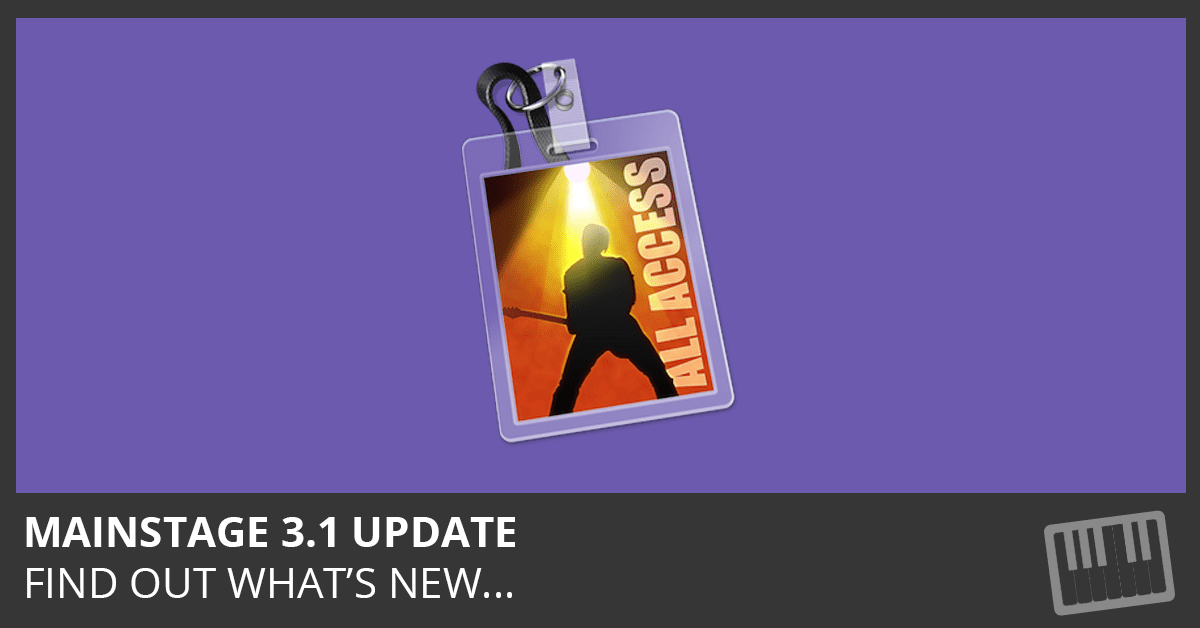
- Mainstage 3 sampler load in samples how to#
- Mainstage 3 sampler load in samples pro#
- Mainstage 3 sampler load in samples free#
For live performance, somewhere between four to six layers is a good start. When you’re sampling a virtual instrument, it’s important to find a good compromise between the number of velocity layers and file size. For example, Synthogy’s Ivory II piano virtual instrument has up to 18 velocity layers split across 128 MIDI values (0-127). In general, a virtual instrument with more velocity layers tend to feel more “real”. This difference in response is what virtual instruments try to capture with velocity layers. Velocity LayersĪ piano responds differently depending on how hard you strike the key.
Mainstage 3 sampler load in samples free#
The default setting of 10 seconds is a good start, but feel free to increase the sustain time if necessary. It’s important to capture the entire “tail” of percussive audio samples (keyboards, percussion, pizzicato strings, etc.), so it’s best to set the sustain time liberablly. The sustain setting specifies how long Auto Sampler will hold a note before releasing it. If you’re auto sampling a virtual instrument with round robin, you can set Auto Sampler to replicate the round robin design with up to eight samples per note. Instead of recording a single sample of the sound source, they may record three or four samples, and program the sampler to play a different sample each time a key is played. Engineers take this into account when creating virtual instruments. Plucking a violin string five times will result in a slightly different sound each time. In the real world, acoustic instruments are dynamic. For virtual instruments that have “same sound” on each key (piano, strings, pads, etc.), sampling every 3-4 semitones is typically a good compromise between sound quality and file size Round Robin

For example, many percussion virtual instruments have a unique sound on every key. With that said, there are situations where sampling every semitone is necessary. For example, sampling every two semitones versus every semitone would result in a 50% file size reduction.

While it’s technically “best” to sample every semitone, the resulting file size of the instrument, due to the number of samples, could be unwieldly. In this situation, notes between C and F# will be pitch-shifted accordingly.

For example, if you select six semitones, the sampling pattern would be something like C-2, F-2#, C-1, F#-1, etc. This setting specifies the distance in semitones (half steps) between each sampled note. In most cases, I’d recommend setting the range from C-2 to C8 unless you are certain some part of the range is not needed. The range start and range end settings specify Auto Sampler’s sampling range.

Mainstage 3 sampler load in samples how to#
In this next section, we’ll go over the various settings in the Auto Sampler plugin, and then discuss how to configure the plugin to auto sample different kinds of virtual instruments. The Auto Sampler plugin can be found under Audio FX -> Utility -> Auto Sampler.Īfter adding the Auto Sampler plugin, you’ll see the graphical interface below. Now that we’ve removed all effects plugins from the channel strip, the next step is to add the Auto Sampler plugin to the channel strip. In the screenshot below, the Chorus plugin should be removed before starting the auto sampling process. If you are sampling a virtual instrument that has built-in effects, use your best judgment to determine if those should be turned off. Effects can always be added later, but they cannot always be removed with ease. The act of sampling immortalizes everything in the channel strip into audio files, so it’s crucial to capture the raw sound of the virtual instrument. Before starting the sampling process, be sure you remove all effects plugins from the instrument’s channel strip. Introduction to MainStage’s Auto Samplerĭifferent kinds of virtual instruments require different Auto Sampler settings, but there are a few general tips to keep in mind. Compared to other resource-heavy plugins like Native Instruments Kontakt and Spectrasonics Omnisphere, EXS24 offers a stripped-down experience that is perfect for live performance where system stability is critical. Auto Sampler allows you to recreate virtual instruments inside EXS24, MainStage’s native sampler plugin.
Mainstage 3 sampler load in samples pro#
In this tutorial, you’ll learn how to sample virtual software instruments with Auto Sampler in Apple MainStage and Logic Pro X.


 0 kommentar(er)
0 kommentar(er)
